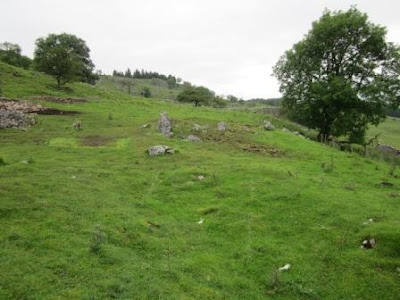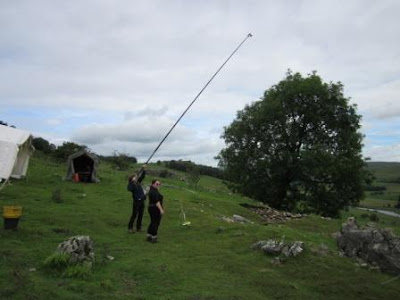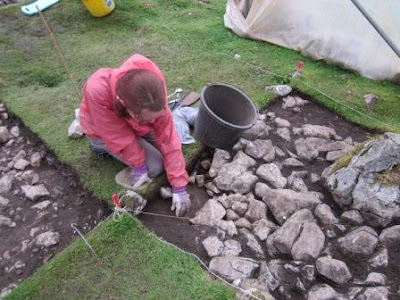Our last day on the site and again the day commenced with rain! However
our depleted numbers could not permit adverse weather to hamper clearing and
restoring the area of operations so we began by loading the Land Rover with all
the surplus equipment that had sheltered overnight under a polythene sheet.
As it is hoped the trenches will be re-opened next year, they were
covered in polythene and a layer of topsoil prior to re-turfing – a challenge
when protruding rocks have to be cut round and allowed to project.
Whilst transferring the topsoil a careful eye was kept for the
wild-life, one of the team with a great love and an affinity for wigglies is
seen here rescuing a large worm!
The concluding analysis from Roger as Site Director was that the excavations, and specifically the magnetic susceptibility results, have highlighted the
potential that this area holds for providing a greater understanding of not
only the DG section, but the site as a whole.
“All gone” – the cleared site, all equipment removed, the trenches
restored and handed back to the sheep, rabbits and bird life.
Final retreat off the hill…..
Pat & Phil Carroll
























